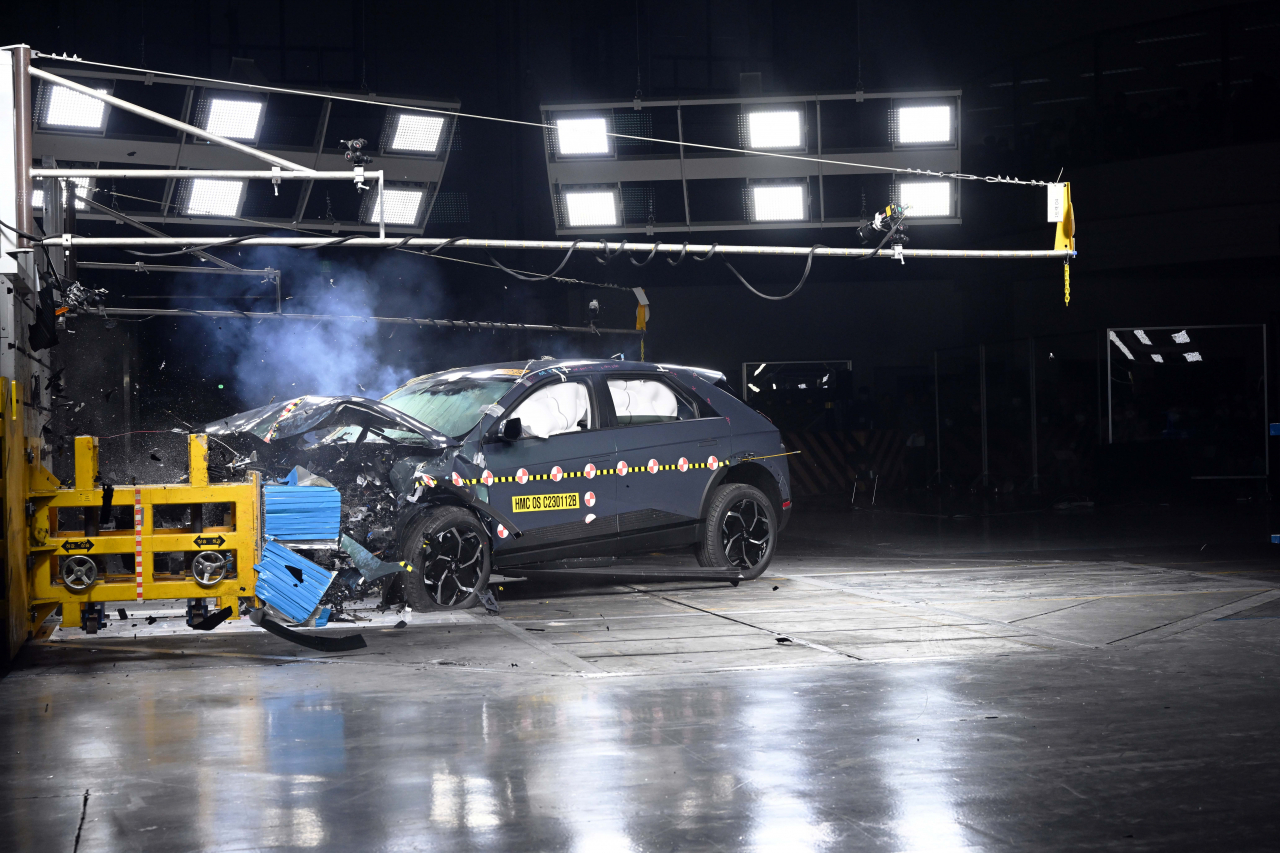Market Now
[From the scene] Hyundai crashes Ioniq 5 to demonstrate EV battery safety
 |
Hyundai Motor Group's Ionic 5 runs into a barrier during a crush test held at its Namyang Technology Institute in Hwasung, Gyeonggi Province, Thursday. (Hyundai Motor Group) |
HWASEONG, Gyeonggi Province -- Despite burgeoning demand for electric vehicles, one key concern among consumers is the huge high-voltage battery pack carries a fire risk.
In an apparent move to ease such concerns and show off its latest safety technology, Hyundai Motor Group conducted a rare crash test of its bestselling Ioniq 5 EV in front of the media Thursday.
During the test performed at the carmaker’s Namyang Technology Institute in Hwaseong, Gyeonggi Province, the Ioniq 5, built on Hyundi’s own EV platform called E-GMP, was driven at 64 kilometers per hour into a one-ton barrier.
The test was designed to destroy 40 percent of the front side.
After the crash, the half-destroyed Ioniq 5 remained intact, leaving no broken windows. Four of the airbags -- two in the front seats and another two in the sides -- popped out and protected the dummies.
Car doors were easily unlocked and opened -- a crucial feature for passengers to quickly escape the car in case of an accident. Some coolants leaked from the bottom of the car but there was little visible damage to the battery, causing no fire or electrolyte leakage.
“The batteries are securely fastened using bolts to prevent them from popping out from the car when head-on collisions happen,” said Baek Chang-in, director at Hyundai Motor Group’s comprehensive safety development division, during a press conference held before the test performance.
Some reporters said that they wished that the demonstration showed other types of collisions than a head-on one, because many fatal fires take place when EVs are hit from the side.
In order to protect the car's batteries in case of side-impact and rear-end collisions, the EVs’ side sill panels are packed with aluminum extrusion materials and their rear parts adopt a structure that fully absorbs the car's collision energy, Baek said.
Baek stressed that the fire accident rate for EVs is not higher than for combustion engine cars, citing fire agency data.
“We are continuing efforts to add new features to prevent fires, but there are constraints to raising the speed limit (to some 100 kilometers per hour compared to the current 64 kph),” he added.
Currently, Hyundai and Kia’s domestic cars and import cars are produced using the same body frames equipped with the latest Generation 3 E-GMP platform.
Last year, Hyundai Motor Group’s E-GMP models, including the Ioniq 5, received the highest safety ratings in the US and other key markets.
A total of 26 models won the Top Safety Pick awards hosted by the US Insurance Institute for Highway Safety -- the second-largest number among carmakers after Volkswagen.
Founded in 1998, about 135,000 employees work at the Namyang research center. At the safety test building, established in 2005, Hyundai carries out more than 100 crash tests for a car model – some 650 tests annually – spending some 10 billion won ($8 million) per year.
By Byun Hye-jin (hyejin2@heraldcorp.com)








